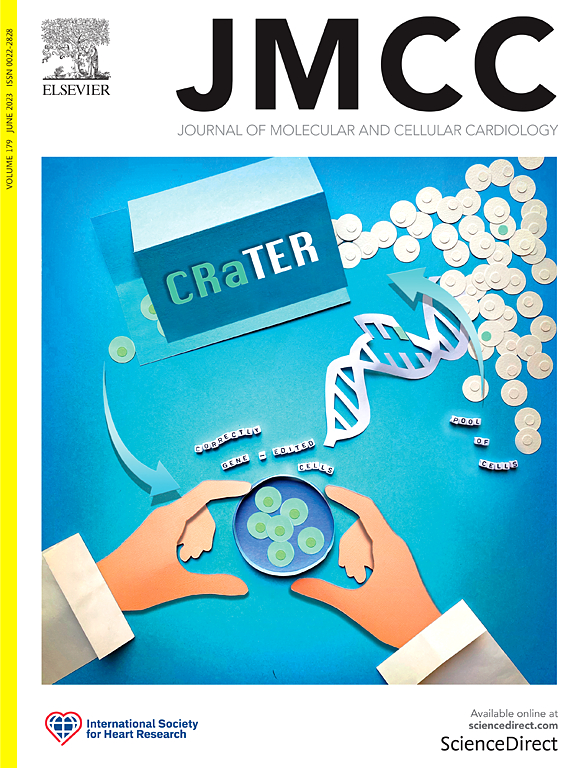Diabetic cardiomyopathy: insights into pathophysiology, diagnosis and clinical management
IF 4.7
2区 医学
Q1 CARDIAC & CARDIOVASCULAR SYSTEMS
引用次数: 0
Abstract
Diabetes mellitus is associated with significant morbidity and premature mortality for which heart failure (HF) is a major cause. HF may be due to ischaemia, hypertension, valvular disease, uraemia, or a specific diabetic cardiomyopathy, and multiple causes may co-exist. A recent systematic review suggests that >40 % of people with type 2 diabetes have diastolic dysfunction without a reduction of cardiac systolic function. In people with type 1 diabetes without known cardiovascular disease, 16 % had systolic or diastolic dysfunction. Early diabetic cardiomyopathy is asymptomatic and can progress to symptomatic HF via increasing cardiomyocyte hypertrophy and death as well as cardiac fibrosis. The 5-year mortality rate for HF is similar or worse than many common cancers. There have been significant recent advances in HF treatment including sodium-glucose co-transport 2 inhibitors (SGLT2i) and angiotensin receptor-neprilysin inhibitors (ARNi), and promising therapies such as finerenone and glucagon-like peptide-1 receptor agonists (GLP-1RA). SGLT2i, finerenone, and GLP-1RA may also have a role in HF prevention in asymptomatic diabetic cardiomyopathy. While there is currently no specific treatment for diabetic cardiomyopathy that goes beyond general HF treatment, there is promising research into innovative technologies such as gene and stem cell therapies. Also, digital technologies will likely have an increasing role in diabetic cardiomyopathy treatment. Herein we review the pathophysiology, diagnosis, and treatment of diabetic cardiomyopathy, with a focus on existing, emerging, and potentially promising novel therapies. We provide practical tables that summarise treatments at each stage as well as important practice points for commonly prescribed drugs.
糖尿病性心肌病的临床管理与病理生理学和诊断。
糖尿病与显著的发病率和过早死亡相关,其中心力衰竭(HF)是主要原因。心衰可能是由于缺血、高血压、尿毒症或特定的糖尿病性心肌病引起的,多种原因可能并存。最近的一项系统综述表明,bbb40 %的2型糖尿病患者有舒张功能障碍,但心脏收缩功能没有降低。在没有已知心血管疾病的1型糖尿病患者中,16% %有收缩或舒张功能障碍。早期糖尿病心肌病是无症状的,可通过心肌细胞肥大和死亡增加以及心脏纤维化发展为症状性心衰。心衰的5年死亡率与许多常见癌症相似或更糟。最近在心衰治疗方面取得了重大进展,包括钠-葡萄糖共转运2抑制剂(SGLT2i)和血管紧张素受体- nepryysin抑制剂(ARNi),以及有希望的治疗方法,如细烯酮和胰高血糖素样肽-1受体激动剂(GLP-1RA)。SGLT2i、芬烯酮和GLP-1RA也可能在无症状糖尿病心肌病中预防心衰。虽然目前对于糖尿病性心肌病还没有超越一般心衰治疗的特殊治疗方法,但在基因和干细胞治疗等创新技术方面的研究很有前景。此外,数字技术可能在糖尿病心肌病治疗中发挥越来越大的作用。在此,我们回顾了糖尿病性心肌病的病理生理、诊断和治疗,重点介绍了现有的、新兴的和有潜力的新疗法。我们提供实用的表格,总结每个阶段的治疗以及常用处方药的重要实践要点。
本文章由计算机程序翻译,如有差异,请以英文原文为准。
求助全文
约1分钟内获得全文
求助全文
来源期刊
CiteScore
10.70
自引率
0.00%
发文量
171
审稿时长
42 days
期刊介绍:
The Journal of Molecular and Cellular Cardiology publishes work advancing knowledge of the mechanisms responsible for both normal and diseased cardiovascular function. To this end papers are published in all relevant areas. These include (but are not limited to): structural biology; genetics; proteomics; morphology; stem cells; molecular biology; metabolism; biophysics; bioengineering; computational modeling and systems analysis; electrophysiology; pharmacology and physiology. Papers are encouraged with both basic and translational approaches. The journal is directed not only to basic scientists but also to clinical cardiologists who wish to follow the rapidly advancing frontiers of basic knowledge of the heart and circulation.

 求助内容:
求助内容: 应助结果提醒方式:
应助结果提醒方式:


